11 Ways to Reduce Toxic Exposure

It’s a fact that the chemicals that make our lives more “convenient” are also contributing to an unprecedented toxic overload.
Our top 11 tips will help you reduce toxic exposure from what you eat and drink every day. Reduce your toxic exposure, stay on a healthy track and thrive throughout the whole year.
Reduce Toxin Exposure from Food
The food we eat is a primary pathway for toxins to enter the body. That also means there’s a lot you CAN do to set yourself on a path to wellness.

Go Organic. Did you know that tests showed a single sample of conventional strawberries had 13 different pesticide residues?
These residues don’t wash off and are linked to lower birth weights, higher rates of autism, and neurological effects.
The “Dirty Dozen” is a list of the 12 worst fruits & veggies that you should buy organic when possible >>>> click here to view
Since organic isn’t always available or costs a lot more, you can turn to the “Clean 15” (click here) which are foods you can eat as non-organic because they have low to NO pesticide levels.

Sure, the Nutritional Facts panel is nice, but many common packaged foods hide their flaws in the “Ingredients” section including toxic artificial colors, flavors and preservatives.
Artificial colors (Yellow 6, Red 40, Blue 1) are hidden in a surprising number of foods including chips, pickles and pizzas. These dyes are allowed by the FDA but have been linked to hyperactivity.
Choose natural foods with clean ingredients to be free of many of these toxics.

Most canned foods are still lined with a resin that contains the hormone-disrupting chemical BPA. Alternatives including BPS may also be estrogenic.
Better options include glass packaging, frozen bags of fruits and veggies, and soups from Tetra Paks instead of cans.

Many forms of food packaging come complete with phthalates, a chemical that makes plastic flexible. Unfortunately, phthalates can leach into food and these toxic chemicals are linked to elevated blood pressure and other cardiovascular risk factors. (Source)
Never microwave foods in plastic and always store foods in glass or ceramic.

Ever heard of “Teflon Flu?” That’s what can happen when non-stick cookware releases toxic fumes at high temps. For safer choices, use glassware for roasting and turn to stainless steel, cast iron, and ceramic for your cookware. (Source)

Thanks to years of pesticide use and the ability of rice to absorb arsenic as it grows, some varieties of rice can be high in this toxic heavy metal.
Basmati rice grown in California tends to be lower in arsenic, while other nutritious grains that are low in arsenic include quinoa, buckwheat, millet and barley. (Source)

Are you using canola oil? Time to stop. This genetically engineered crop is sprayed with pesticides and then extracted using hexane, a toxic solvent that leaves residues in the oil. (See How It’s Made)
Choose organic (made without solvents) and expeller-pressed oils. These oils retain much more of the plants’ nutritional value and are toxic-free.

Artificial sweeteners such as aspartame have a bad rap for good reason, however many “natural sweeteners” are also a problem.
High fructose corn syrup is of particular concern since it’s typically genetically engineered to withstand high levels of glyphosate. This common herbicide was recently declared a probable carcinogen by the World Health Organization.
Look for stevia as a natural, no calorie sweetener. Make sure it’s processed using water extraction methods for a toxic-free sweet taste. (Source)
Reduce Toxin Exposure from Drinks
Small changes to how you hydrate can make a big difference in how you feel. Take these steps to revitalize your energy throughout the day.

Arsenic, fluoride, pharmaceutical drugs and much more can be found in municipal or well water. Drink pure, filtered water for the best way to hydrate. Steer clear of sodas which are full of synthetic caffeine, chemicals and sugar and can even deplete your body of much needed minerals.

Serve any beverage in glass for the safest source. Or when using water bottles, opt for refillable stainless steel. Avoid plastic water bottles since almost all types can leach chemicals. (Source)

Most forms of “fruit juice” are little more than sugared water, with a sprinkling of synthetic vitamins. Testing by the USDA showed many apple and grape juices contained up to six different pesticide residues. (Source)
The best juice to drink is the one you mix yourself, sourced from whole fruits and veggies. Just watch the fruit content so you don’t overload on sugar.

